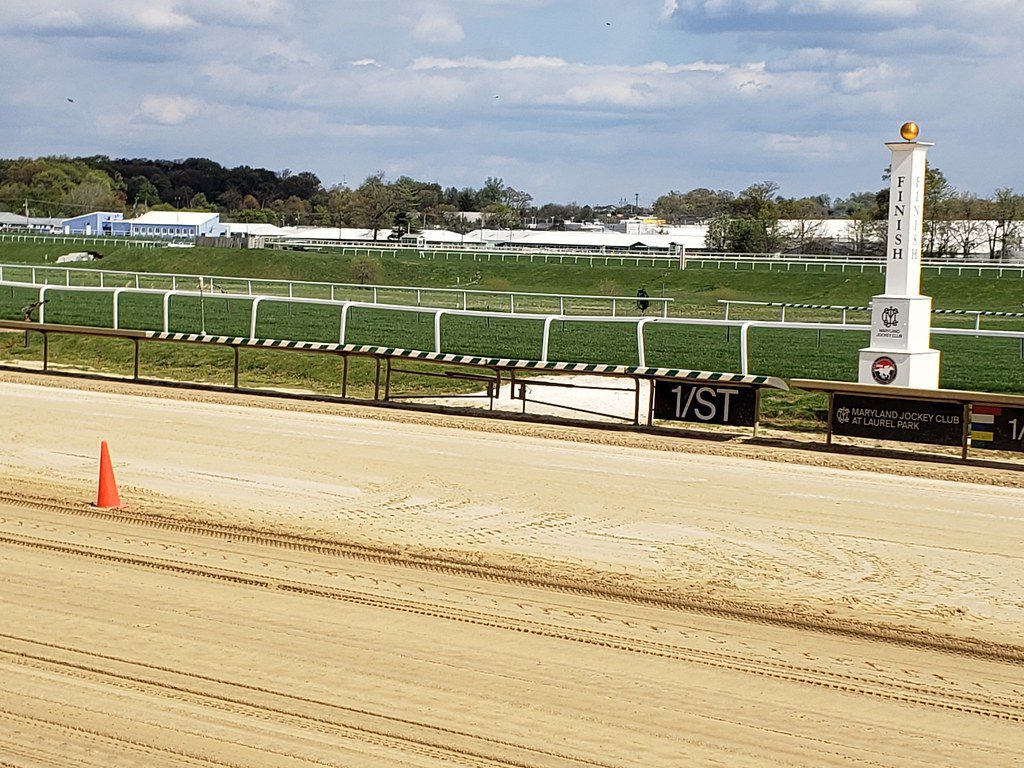“Gun-shy” horsemen sound off on Laurel Park track surface
The final regularly scheduled Maryland Racing Commission meeting of the 1/ST era of Maryland racing included discussion of one topic that’s frequently been the focus of Commission interest in recent years: the condition of the Laurel Park main track.
1/ST, the public-facing racing identity of track owners the Stronach Group, is slated on January 1 to turn over control of day-to-day racing to a new, nonprofit entity inheriting the Maryland Jockey Club name.
Maryland saw its first rain in weeks in mid-November and, according to some horsemen, a dramatic change in the Laurel racing strip that led to the cancellation of racing Nov. 22-24.
The material in the track cushion “wasn’t draining enough, and it didn’t have the consistency,” trainer Gary Capuano told the Commission.
“Our horsemen are scared,” said Maryland Thoroughbred Horsemen’s Association (MTHA) executive director David Richardson. “They’re gun-shy.”
Richardson said that some horsemen had contacted him to say that the track “does not seem to be binding together” when moisture gets in it.
The first public sign that something might be amiss came Nov. 17 when Calle de Oro, a two-year-old Hard Spun colt trained by Jose Corrales for himself and George Resta, suffered a fatal breakdown during the day’s fourth race.

Five days later on Nov. 22, according to Maryland Jockey Club acting president Mike Rogers, Overwish, a promising Curlin filly trained by Brittany Russell for Repole Stable, suffered a fatal breakdown galloping out after breezing a half-mile with jockey Jevian Toledo aboard.
Richardson said that Toledo told him afterwards, “I’m scared to ride… I don’t know what’s going on.”
Rogers, who read from prepared remarks, told the Commission that Danny Finke, a longtime member of the Laurel track crew now serving as interim track superintendent following the Dec. 1 retirement of Ken Brown, indicated that he had “no concerns about the safety of the racetrack” following the Nov. 22 incident.
After an initial agreement by the jockeys to ride once the track had been sealed fell apart, Rogers said he “proposed an independent evaluation of the track,” which all parties accepted. The Horseracing Integrity and Safety Authority (HISA) performed that evaluation and found the track safe.
Laurel resumed live racing over Thanksgiving weekend.
Rogers told the Commission he had “received positive feedback regarding the condition of the track” during and after this past weekend’s racing. The track was listed as sloppy on Thanksgiving day and then muddy the next day before being upgraded to fast for Saturday and Sunday.
And Capuano said that despite his misgivings about the track in wet weather, on those days, “It was good.”
Yet even before the first breakdown, Capuano said he had been raising the alarm over the condition of the strip.
In the days following Nov. 11 rainfall, the veteran trainer said he had breezed some horses that “went like 10 to 15 lengths faster than they normally do… That’s when we started having the issues.”
But he added, “We’ve been dealing with this for years now.”
Indeed, as far back as 2017, the horsemen’s group commissioned a study from former MJC track superintendent John Passero on the condition of the main track. Laurel’s dirt track was rebuilt in 2021 but has been forced to shut down at least briefly in each subsequent year.
Going forward, Capuano said horsemen understand the risks they take.
“Nothing’s perfect. Things are going to happen,” he said. But horsemen need to “have confidence” in the racing surface, and that’s something that he said currently is lacking.
LATEST NEWS














The 2 yo by Hard spun trained by Jose Corrales that broke down and was put down
On the track was making his third start in 23 days and suddenly it is the tracks fault?
Repole filly that fractured her cannon bone had been troubled by
Hairline cracks in her shins for her whole career with lots of time off.
Obviously she had problems and suddenly it is the tracks fault?
Sometimes trainers don’t make the best decisions as how often to run 2 yos
And often horses that change hands don’t have knowledge of previous issues travel with them
If previous trainers think they have been resolved